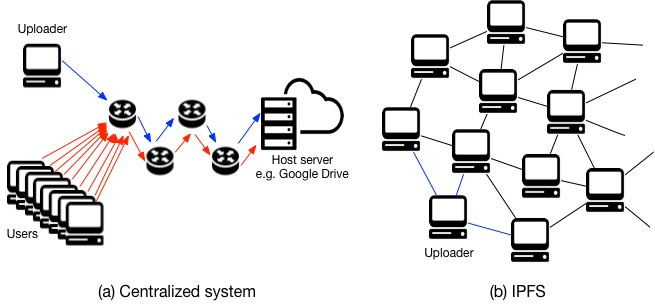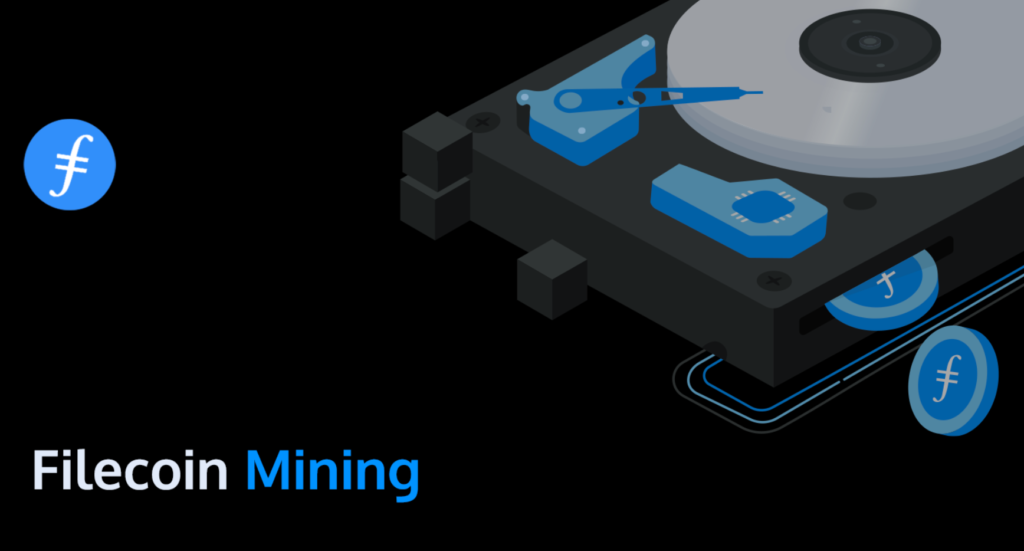Learn what is IPFS, Filecoin mining and the relationships to know how to choose a better filecoin mining rig.
IPFS is a decentralized, distributed storage network protocol that can make our Internet faster, safer, and more open. Filecoin (FIL) is a blockchain project and an incentive system running on the IPFS network.
With the popularity of IPFS, more and more people are turning their attention to Filecoin mining, and everyone wants to get a share of this popular project.
The Filecoin/IPFS mining machine market is extremely opaque. The calculation methods of various merchants vary widely, and miners are also at a loss, not knowing how to choose the filecoin mining rig. Today, the blog will give you a detailed analysis of the mining principle of Filecoin/IPFS, as well as how to calculate the efficiency of mining machines and choose mining machines.
What is IPFS
The full name of IPFS is InterPlanetary File System. IPFS is a decentralized, distributed storage network protocol that can make our Internet faster, safer, and more open. The goal of the IPFS protocol is to replace the traditional Internet protocol HTTP.
In the HTTP network, data is mostly concentrated in a single server or data center. The IPFS network encourages everyone to contribute their own storage resources to help users store data.

What are the Benefits of IPFS
Safer
In the HTTP network, data is stored centrally, which means that once a failure occurs in the data center beyond the redundancy range, the data hosted by the user will not be able to be accessed normally, and there may be a risk of data being stolen by criminals .
In the IPFS network, when a piece of user data is stored, it will be divided into several small pieces of data and distributed to different nodes on the network. Each file is hashed based on the data content, and finally forms a unique encrypted hash value – the content identifier CID, and at the same time returns the access private key, and the user obtains the data based on the CID content addressing. Content addressing breaks the way of data hosting, and users have full control over the data.
Higher efficiency
When downloading files using the HTTP protocol, the data is distributed to users through the data center. When multiple users extract the same data at the same time, they all need to download the data from the data center and transmit it locally, which is equivalent to repeated downloading of data multiple times, which will easily cause congestion on the Internet’s backbone lines and be inefficient.
In the IPFS network, when the user needs data, the nearest node that stores the target data will transmit the data to you at the same time, multi-node sharing data, point-to-point transmission, which greatly improves the transmission efficiency.
Relationship between IPFS & Filecoin
Filecoin (FIL) is a blockchain project and an incentive system running on the IPFS network. It is a reward for users, and the reward is FIL. IPFS distributed storage requires the establishment of many nodes around the world. As an incentive mechanism for IPFS, Filecoin is used to encourage more miners around the world to join this distributed network, contribute their own storage space and bandwidth (nodes), and circulate in the network. to pay for data storage. The vision of IPFS/Filecoin is to replace the WEB2.0 HTTP protocol and create a more open, fast and secure Internet WEB 3.0 based on IPFS/Filecoin.
What is Filecoin & Mining Process

First of all, we know that Filecoin/IPFS is a storage project. Mining is to store data by packaging and prove effective storage to the network to obtain effective computing power. According to the proportion of effective computing power in the entire network, block packaging rights are obtained, thereby obtaining Filecoin token rewards. Specifically, the steps of mining are mainly divided into the following steps:
- Proof of reproduction. The miners pack and seal the data according to the format required by the network through the computing unit of the mining machine, and submit the proof to the network. That is what we usually call the mining process of P1, P2, C1, and C2. This process is mainly completed by the CPU and GPU, which consumes the most computing power and is also the most time-consuming. It usually takes several hours to complete. Although Filecoin/IPFS is a storage project, the main cost of the Filecoin/IPFS mining machine is the computing unit, which accounts for more than 60% of the cost of the mining machine. The second is the storage unit, that is, the cost of the hard disk accounts for about 30% of the cost of the mining machine.
- Space-time proof. Proof of time and space means that after the miners have stored the data in the first step, they must submit a replication proof to the network every 30 minutes or so, proving that the data is still there and completely stored on the mining machine. The chain will also randomly issue a challenge at each block time to verify the existence of the data and prove the effective computing power of the miners. If the miner fails to submit the space-time proof within the specified time, or fails to verify the data on the chain, there will be a loss of computing power. Not only will the coins not be mined, but the pledged coins will also be deducted.
- Pledge mechanism. Because Filecoin/IPFS is committed to building a web3.0 storage infrastructure in the future, in order to ensure the security of valid data stored by customers on miners and mining machines, miners will not lose or damage customers’ stored data at will, so Filecoin/IPFS mining uses Pledge mechanism. Generally speaking, if miners want to participate in mining, they must first pledge a certain amount of FIL coins to the network. Currently, the pledge for a sector (32GB) is 0.23 FIL coins
Read More: How to Mine Filecoin: Complete Guide (Steps)
How to Choose a Filecoin Mining Machine
Through the analysis of the principles of Filecoin/IPFS mining, we can see that: First of all, Filecoin/IPFS mining has very high requirements for technology, operation and maintenance, and network. If the technology is unstable or the computer room and network are unstable, it may not be able to submit the copy certificate and space-time certificate to the network in time. There will be a loss of computing power, and even damage or loss of customer data, and the pledged currency will be fined by the network.
Examine the Capabilities & Reliability
Therefore, the first step in choosing a mining machine is to examine the technical capabilities, operation and maintenance capabilities of the mining machine manufacturer and the reliability of the mining machine room.
Figure out the Efficiency & Storage Space
Second, the core of the computing power of Filecoin/IPFS mining machines is actually the speed of packaging and packaging data. That is to say, the main investigation of mining machines is how many tons of valid data can be packaged per day, rather than how many tons of storage space. Many manufacturers on the market only advertise how many T of storage space there is, but do not explain how many T of effective computing power can be packed per day, and how many days can be packed with effective storage. This is basically a sneaky change of concept, causing miners who don’t understand to think that storage is computing power. In fact, no matter how large the storage is, it cannot be converted into effective computing power without packaging, and it will not actually produce coins.
Therefore, when miners choose mining machines, they must figure out two parameters: computing packaging efficiency and effective storage space. Only in this way can they compare different mining machines.
Ensure the Physical storage & Actual storage
The third is physical storage and actual storage. Generally speaking, in order to ensure data security, Filecoin mining machines usually do storage backup. Due to technical differences among vendors, the space occupied by backups varies from 10% to 50%. This results in the same physical storage space, and the actual effective storage of different mining machines varies greatly.
Conclusion: Filecoin/IPFS Mining
Therefore, when choosing a mining machine, it is necessary to determine whether the so-called “computing power” is actual storage or physical storage, so that the cost of the mining machine can be calculated more accurately.
To sum up, since Filecoin/IPFS mining is different from traditional POW mining, it is relatively complicated. The parameters of mining machines on the market are also confusing. As a miner, when choosing a mining machine, you must first understand the technical strength, operation and maintenance capabilities of the mining machine manufacturer, and the network stability and security of the computer room; Compare mining machines and choose cost-effective mining machines so as not to be fooled.
Welcome everyone to continue to pay attention, and we will continue to share the knowledge and content of Filecoin/IPFS with you, and jointly promote the ecological construction of Filecoin/IPFS.
FAQs
Can Filecoin be Mined?
The mining process used by Filecoin is distinct from the conventional mining process used by Bitcoin and other cryptocurrencies. The Filecoin network uses the Proof-of-Replication (PoRep) and Proof-of-Spacetime (PoST) consensus algorithms.
Why do We Need Filecoin?
Filecoin functions as a decentralized storage marketplace on the blockchain, which rewards network participants who help in storing files and retrieving them. — Built as an incentive layer for IPFS, Filecoin powers a new, decentralized internet where storage is owned and operated by its users.










